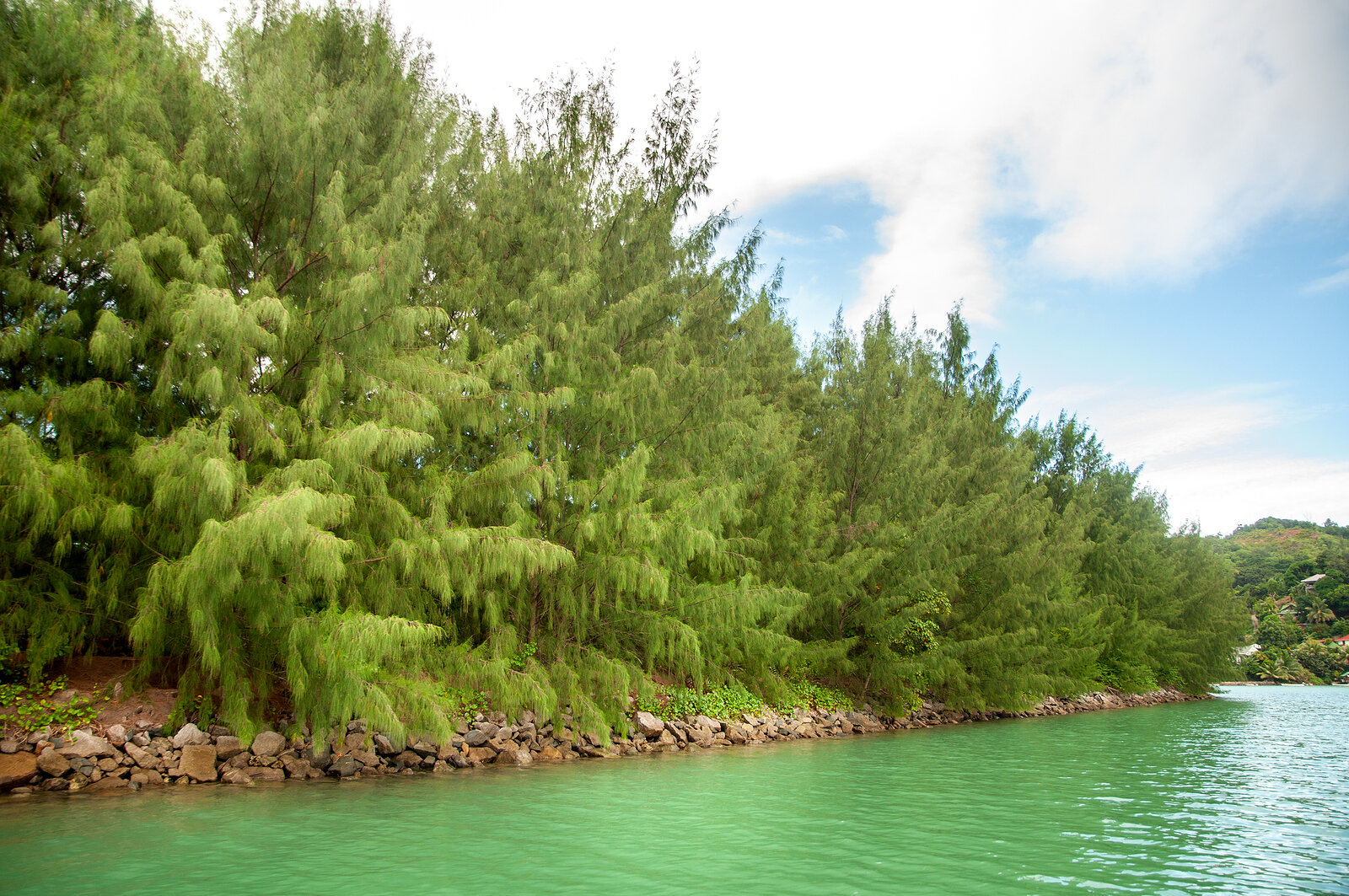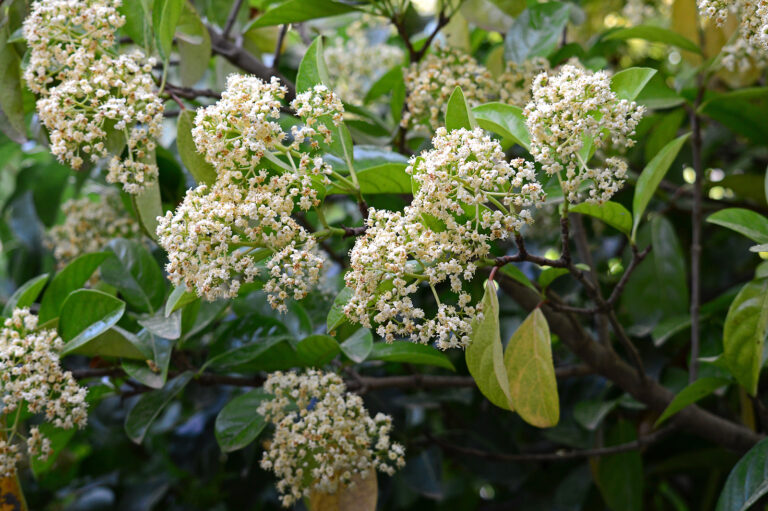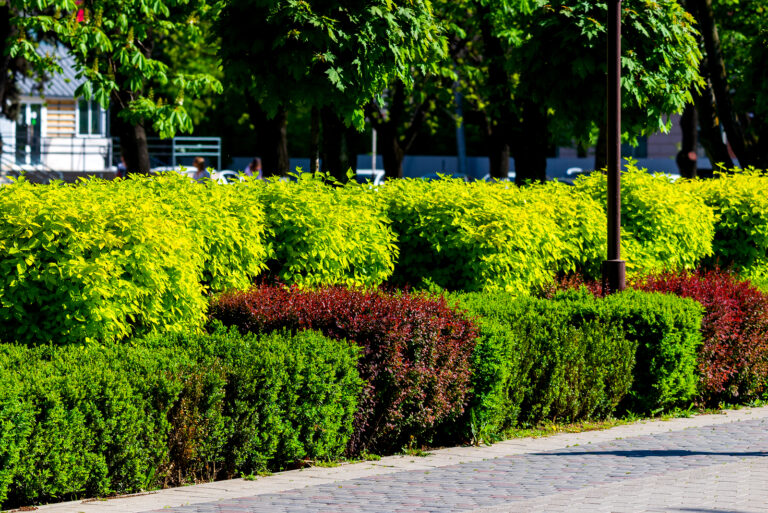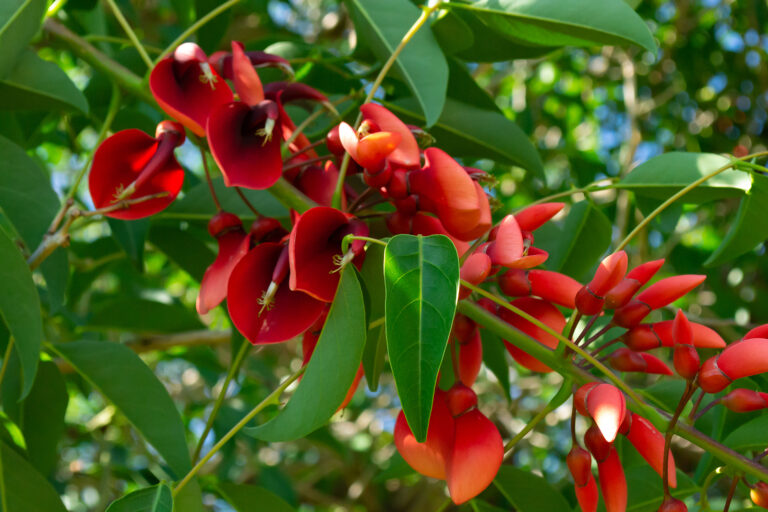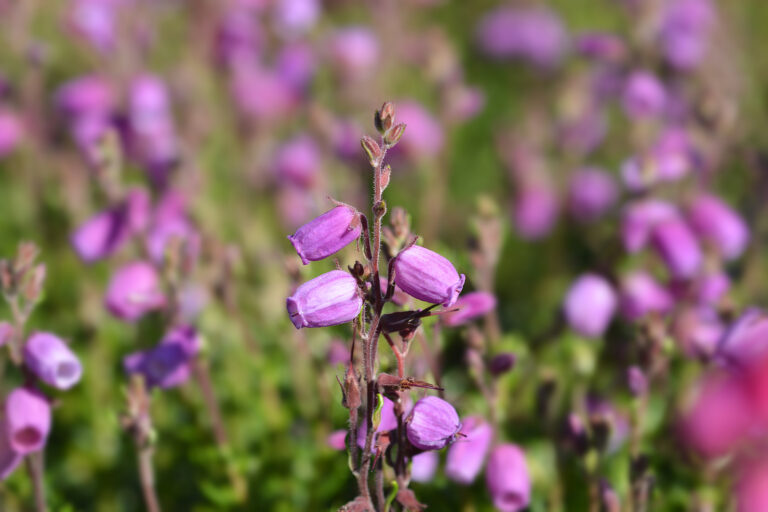How to Grow Casuarina – Australian Pine
Casuarina, commonly known as Australian pine or she-oak, is a fast-growing, evergreen tree native to Australia, Southeast Asia, and the South Pacific. It features thin, needle-like foliage, resembling pine trees, though it’s not a true pine. Casuarina’s unique feathery branches are often grayish-green, creating a soft, airy texture in the landscape. Its hardiness in challenging conditions like salty, poor soils makes it a valuable addition to coastal and arid gardens.
Depending on the species, Casuarina trees can grow between 15 to 35 meters (50 to 115 feet), though some remain shrub-sized and are suitable for smaller gardens.
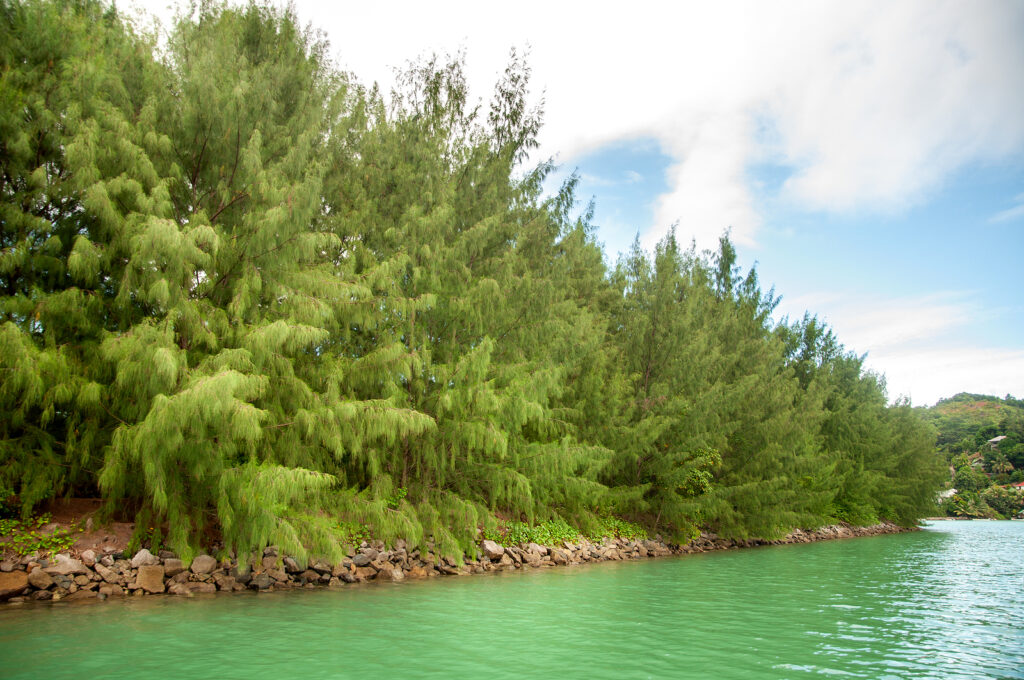
Where to Grow Casuarina
Casuarina is hardy and adaptable, making it suitable for a variety of garden settings. Choose a location with:
- Full Sun: Casuarina prefers at least six hours of direct sunlight daily. It can tolerate partial shade but grows best in full sun.
- Well-Draining Soil: While it tolerates different soil types, including sandy and saline soils, good drainage is essential to prevent root rot. Casuarina is often planted in coastal and arid gardens due to its salt and drought tolerance.
- Adequate Space: Given its potential height, plant Casuarina at least 6 meters (20 feet) away from other large plants, trees, or structures for unhindered growth.
Planting Casuarina
- Start from Seed or Sapling: Casuarina seeds are readily available, though you may also find small nursery plants.
- To grow from seed, soak the seeds in warm water for a few hours before planting to promote faster germination. Plant in a well-draining seed-starting mix and keep moist until sprouting.
- To plant a sapling, dig a hole twice the width and the same depth as the root ball.
- Amend the Soil: If the soil is heavy clay, mix in some sand or compost to improve drainage.
- Planting Depth: Place the root ball level with the surrounding soil to avoid deep planting, which can stress the plant.
- Watering: Water the plant thoroughly after planting to settle the soil around the roots.
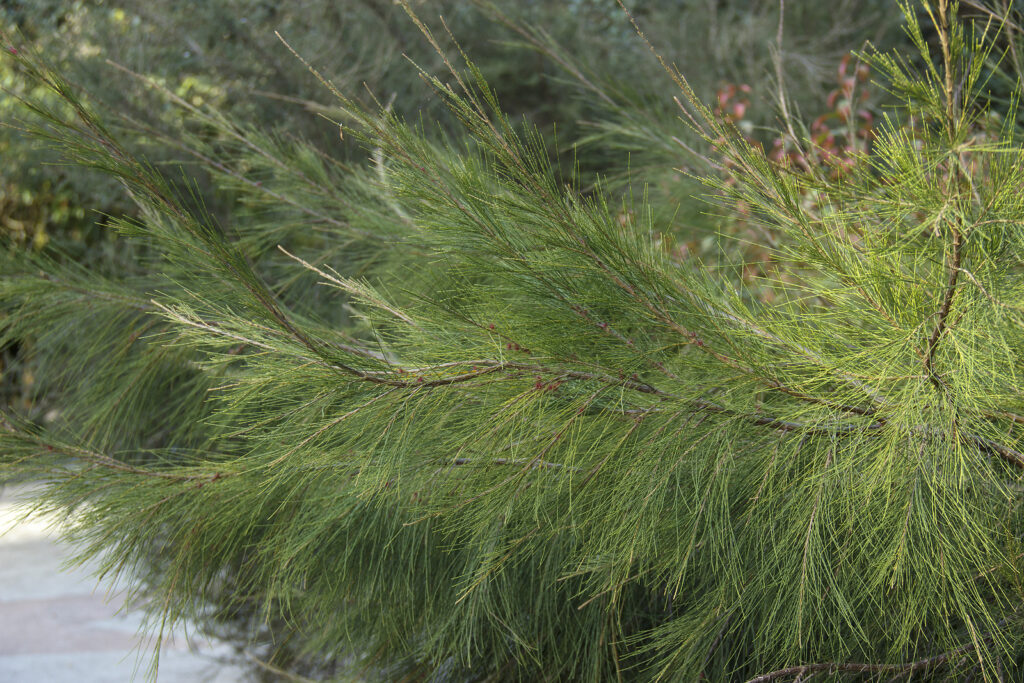
Casuarina Care
Watering
Casuarina trees are drought-tolerant once established but need regular watering when young to develop deep roots. Follow these guidelines:
- During Establishment: Water every 7-10 days in the first few months if there is no rainfall.
- Mature Plants: Once established, they only need supplemental watering in prolonged dry periods. Casuarina’s deep roots make it capable of drawing moisture from lower soil layers.
Fertilizing
Casuarina has low nutrient needs due to its nitrogen-fixing ability, which allows it to improve poor soils. If your soil is severely depleted, apply a balanced, slow-release fertilizer in spring. Avoid heavy fertilization, as too much nitrogen may reduce its resilience.
Mulching
Apply a 2-3 inch layer of organic mulch around the base to retain soil moisture, regulate temperature, and suppress weeds. Casuarina naturally sheds needles, which can also act as mulch. Leave some needle litter around the base to promote moisture retention and prevent competition from grass or weeds.
Pruning
Casuarina generally requires minimal pruning. However, occasional pruning can improve its appearance and health:
- Shape and Structure: Prune any dead, damaged, or crowded branches in late winter or early spring.
- Size Control: Light pruning can help control height and spread if desired, though this tree often looks best when allowed to grow naturally.
Pest and Disease Management
Casuarina is generally pest- and disease-resistant, but it can occasionally face issues:
- Aphids and Mites: These small pests may appear on young shoots but are rarely damaging. Use a gentle insecticidal soap if needed.
- Fungal Issues: Waterlogged soil can lead to root rot. Ensure good drainage, especially in clay-heavy areas.
Casuarina Propagation
Casuarina trees are commonly propagated from seeds, though they can also be grown from cuttings. Here’s how to propagate:
- From Seed: Collect seeds from mature cones in late summer. To germinate, soak seeds in water for 24 hours, then plant them shallowly in well-draining soil and keep moist until sprouting.
- From Cuttings: Take a semi-hardwood cutting in late spring or summer, dip in rooting hormone, and plant in a moist, sandy mix. Keep covered with plastic to retain humidity until rooting, which may take several weeks.
Uses of Casuarina in the Garden
Casuarina serves multiple purposes, particularly in gardens exposed to strong winds, poor soil, or coastal air.
Windbreaks and Erosion Control
Casuarina’s dense foliage and height make it excellent for use as a windbreak, especially in open landscapes prone to strong winds. Its root system stabilizes soil, reducing erosion, particularly on slopes or coastal sites.
Soil Improvement
Casuarina is a nitrogen-fixing plant, which means it enriches the soil over time, making it valuable in poor or depleted soils. Over time, it can increase soil fertility for neighboring plants and reduce the need for synthetic fertilizers.
Shade and Screening
Casuarina’s height and density make it effective for privacy screens or natural fences. When planted in rows, it creates a living wall that provides privacy and shade. This is useful in larger gardens or around structures where a fast-growing, low-maintenance screen is desired.
Mulch and Groundcover
The needle-like foliage Casuarina sheds forms a natural mulch layer, which conserves soil moisture, reduces weed growth, and protects roots. The needles also add organic material as they decompose, contributing to soil health.
Wildlife Habitat
Casuarina provides habitat for various wildlife, including birds, insects, and small mammals. The dense foliage and branch structure offer nesting spots, while the seeds attract birds, making Casuarina an excellent choice for gardeners looking to create a bird-friendly environment.
Potential Drawbacks and Considerations
While Casuarina has many benefits, there are a few considerations to keep in mind:
- Invasive Potential: In certain regions, Casuarina can be invasive, spreading aggressively and outcompeting native vegetation. Check local regulations and recommendations before planting, especially in subtropical or tropical climates.
- Root Spread: Casuarina has an extensive root system, which can interfere with nearby plants, pathways, or underground utilities if planted too close. Always plant at a sufficient distance from structures or sensitive garden areas.
- Litter Drop: The tree produces a considerable amount of leaf litter and woody debris, which might be problematic in more manicured garden spaces. However, this litter can be beneficial for mulching areas where a natural, forest-like appearance is preferred.
Recommended Varieties for Gardens
Several Casuarina species are popular for garden use, depending on climate and purpose:
- Casuarina equisetifolia (Australian Pine): This species is fast-growing and commonly used for coastal windbreaks.
- Casuarina cunninghamiana (River She-Oak): Prefers moist soils and is often found near riverbanks or ponds; it works well in slightly more temperate regions.
- Allocasuarina littoralis (Black She-Oak): A smaller species with a bushier habit, ideal for mid-sized gardens and used for erosion control.
Casuarina Summary
Casuarina is a resilient, versatile tree that can add unique texture, ecological benefits, and functionality to a variety of landscapes. With proper placement and care, it thrives in tough conditions, provides valuable shade, improves soil health, and serves as an effective windbreak. Although it requires space and occasional pruning, its low maintenance needs and durability make it an excellent choice for gardeners looking to add a distinctive, hardy, and beneficial tree to their garden. Whether for erosion control, soil enrichment, or simply a unique ornamental tree, Casuarina proves to be an adaptable and valuable plant for the right environment.

